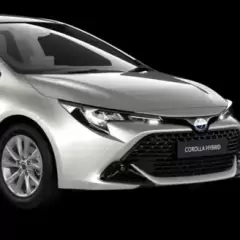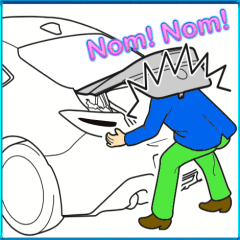Leaderboard
Popular Content
Showing content with the highest reputation on 11/25/2014 in all areas
-
People on forums are very well versed with the running of their car and will be checking tyres / lights /levels probably weekly. You have to understand the vast majority of people never look under the bonnet from one service to the next, let alone check tyre pressures or look at tyre depths. Now you may not agree with that but it is fact, some tyres we see have the wires hanging out of them, and have been illegal for months! If the dealer said you need tyres right now then that is clearly not the case, what we would do would be to report them as 4mm, not requiring replacement right now, but would set a reminder for the customer to be contacted again in say 4 or 6 months to measure them. Your dealer will have an idea of how many miles a year you do, however if you are a new customer, your dealer would not know your driving pattern. If it turns out you do 15K a year then your 4mm tyres MIGHT need replacing sooner I tell my team to be completely honest with people, I would sooner get you back in to check the tyre depth rather than have you think you are being ripped off. Tyres are usually a distress purchase, but being honest with people and keeping them informed is the best way to handle what can be a stressful time, especially at this time of year2 points
-
2 points
-
Sorry Timberwolf, but that is not how it works at all. The bulk of the oil is contained in a tray at the bottom of the engine and is open to atmospheric pressure through a number of openings such as the filler cap and the dip stick tube. There is no way therefore that the pressure in the oil in the sump can rise much above one atmosphere. The oil that provides lubrication to the moving parts of the engine is at much higher pressure and is driven by the oil pump. As long as the oil level in the sump is above the intake port on the pump, its level will not directly affect the working oil pressure. Such damage as results from overfilling the sump, is much more likely to arise from the "churning" that is caused by failing to keep the lower moving parts of the engine clear of the surface of the oil in the sump. There does not need to be actual contact with the oil surface, "windage" can be sufficient to generate churning. If there is actual contact then it may be sufficient to cause mechanical damage. A number of problems arise from churning. The oil may be emulsified so that the pressure on the output side of the pump reduces; oil may be splashed into the lower part of the engine cylinders and be carried past the pistons so that oil is burned with all the consequent effects that result. There may be other problems in particular engines - oil being drawn up a breather tube for example. Manufacturers will generally try to provide adequate "freeboard" so that overfilling a little may do no harm, but in modern compact engines where space is at a premium, damage is more likely and it pays to be careful.1 point
-
Also I meant to add to my previous post two links I have found useful. This first LINK, describes the 5 stages of hybrid warm up. Note that useful pulse and glide (see next link) can't be done until Stage 3b and Stage 4. This second LINK describes how to use the hypermiling technique of Pulse & Glide (P&G). Note that P&G is less successful when the OAT (outside air temperature) drops below ~8-10℃, due to the ICE cooling too much while in the glide phase. Typically there is better success with this technique at speeds below 42 mph. These maybe of interest, or it maybe too much, I'll leave that to you to decide. The key secret is to not fight the HSD, but work with it. HTH, happy hybrid driving. :)1 point
-
But now one will have a slightly lower pressure than the others and they'll all be much lower than when it went in. I don't follow, why would one have a slightly lower pressure than the others? It's unlikely that you'd notice any difference. If it was overfilled too much then you'd notice as it would be terminal. In the long term, the engine is manufactured to a very fine tolerance, adding excess oil will result in a higher pressure within the engine, so it may lead to earlier failure of an engine component. At least that is my understanding. It should be pointed out that this mistreatment has been going on for a very long time, if most dealers are getting it wrong, then the engine still has a likely life of at least 100k before it starts burning oil and I've no idea at what age the 1.5L engines typically fail.1 point
-
Good question. In the two cases (none were Toyota) I've experienced it has come from the crank at the flywheel end and once at the cam (much less). Leakage started after a few hundred miles using synthetic oil. As I mentioned, this happens on old engines that have not been looked after and they are essentially sealed by the gunk in them. Again, this is rare nowadays and very unlikely to happen using modern oils, in a modern engine like the 1CD-FTV we're talking about in this thread. I've covered many miles with this engine without any leaks of any kind. So this should not be one of your concerns. Use semi- or fully synthetic. Either will work. The important bit is that you change it regularly.1 point
-
@ avensisd4d... My engine was up to heat as I had driven it but from standing it took about 2-3 minutes, could vary I suppose on different cars...1 point
-
1 point
-
If you really want to be scientific and compare mpg, the following are important: 1. Fuel consumption falls in summer as engines become more efficient, and rises in winter. So mpg figures from April - September will be higher than from October to March. 2. Short journeys - under 7-10 miles use more fuel. Journeys under 2 miles, even more. Cold engines use more fuel 3. Traffic jams use more fuel. 4. Stop/start driving uses more fuel. 5. Speeds over 70mph use more fuel 6. Heavy braking uses more fuel. 7. Poor driving styles use more fuel. 8. Most in car fuel consumption figures are pants. You must - repeat MUST - use Fuelly or a recording of miles and fuel over 1,000s of miles to get accurate figures. Any instant figures, or figures over a few hundred miles are pants. 9. Driving styles affect fuel consumption. See also parking.And acceleration. 10. Tyre pressures affect fuel consumption. Unless you check regularly and use recommended pressures and an accurate guage - your figures are pants. 11. Hills affect fuel consumption. Fuel used is far higher than on the flat. ,Yes: I am a boring old #### and log all my miles, etc. And I average 42mpg in a 1.4Jazz mainly urban driving. (and can prove it.. Fuelly and written records. So anything from 35 - 50 mpg is possible depending on the above. And unless you check each of the above, comparisons are meaningless.1 point
-
I decided there was no point worrying about the oil overfill after I wondered what other jobs they weren't doing properly or at all. Now, after a service I just check if it still has a wheel at each corner.1 point
-
The legal limit is 1.6mm. Most companies running fleets will change them at 3mm. Most lease companies like to get the absolute maximum life out of a tyre if they're paying for them. Beware of that one. If a main dealer suggests you need new tyres at 4mm then treat that with contempt.1 point
-
At 4mm left, you only have 2 mm to play with before they absolutely need changing. Your dealer will probably not see you in time to check them again before they are illegal. From a "reporting" point of view, we would also be advising you to change them very soon. A car travels 10% further at 3mm than it does at 4mm under heavy braking, leaving tyres till they are 2mm is asking for trouble, even though they are legal, the whole handling and braking characteristic goes out of the window1 point
-
I am lucky to have an IQ auto which is fantastic but on those days I want to drive a larger 4x4 I drive a 2005 Landcruiser LC4 - Both very different vehicles but both fantastic. The IQ uses half the fuel of the Landcruiser (no surprise there) and only £20 year road tax compared to £300. But the IQ won't tow our caravan ha.1 point
-
1 point








